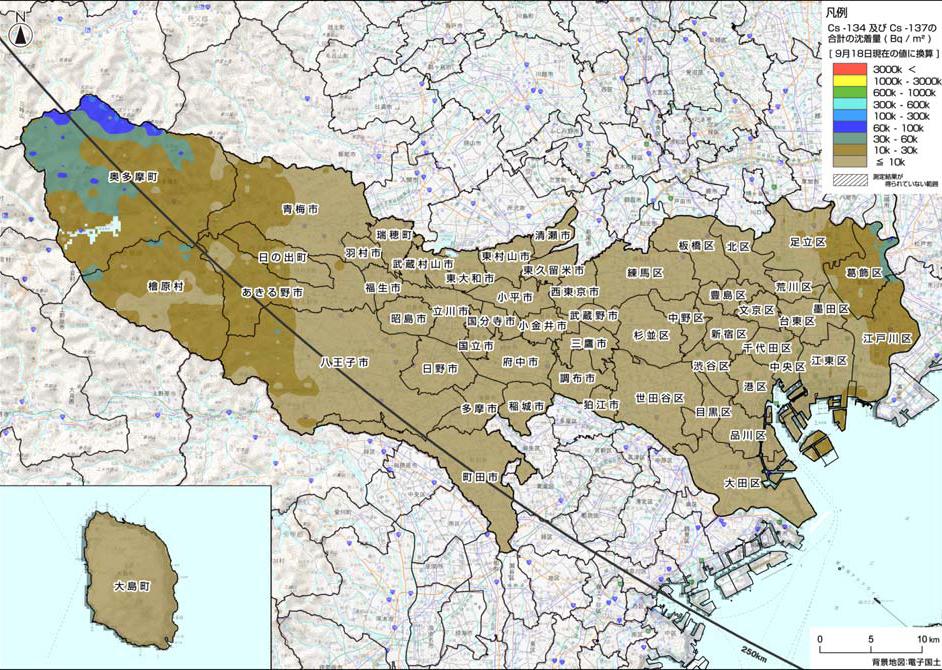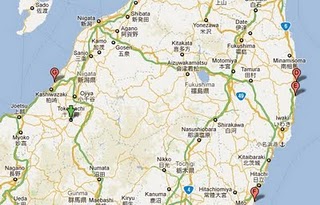From the article:
Does that mean that NOW 25 years after Chernobyl those people are getting seriously ill who were back then exposed to low-level radiation?
Yes, indeed. Those who have been adults back then survived 25 years and are NOW getting sick. We call it the silent death. Those who have been children back then got sick a lot earlier – often times with fatal consequences.
…
How do I have to imagine life in those contaminated areas?
Life? Above all there is death, silent death, mainly cancer. People die of all sorts of diseases related to Strontium, affecting for example the heart muscle, whose energy becomes dysfunctional. We have studies from Belarus documenting that already 2-year-old to 4-year-old children die of acute heart failure. It does not have to be cancer. The people die of kidney and liver failure and all kinds of blood diseases, also known as ‘Chernobyl AIDS’.
Now compare that to what the Japanese people are being told by their elite puppet government:
– NHK Calls 20 Millisieverts/Year ‘Low-Level Radiation’ & The Lies Of Minister Goshi Hosono
Dörte Siedentopf is a member of International Physicians for the Prevention of Nuclear War (IPPNW), which is a non-partisan federation of national medical groups in 63 countries, representing tens of thousands of doctors, medical students, other health workers, and concerned citizens who share the common goal of creating a more peaceful and secure world freed from the threat of nuclear annihilation. The organization’s headquarters is in Somerville, Massachusetts.
English summary by Fukushima Diary’s Mochizuki at the end of this article.
– Das leise Sterben – Horrorszenario wartet auf Japan (NTV, March 19, 2011):
Dörte Siedentopf bereist seit 20 Jahren verstrahlte Regionen rund um Tschernobyl. Dort und auch hier in Deutschland hilft sie Betroffenen der Katastrophe. Siedentopf ist Mitglied des IPPNW, der internationalen Ärztevereinigung für die Verhütung des Atomkrieges. Mit n-tv.de spricht sie über das traurige Leben und leise Sterben in den Dörfern Weißrusslands und über das, was auf die Japaner nach dem Reaktorunfall von Fukushima zukommen könnte.
n-tv.de: Aus Ihren Erfahrungen, die Sie seit 20 Jahren mit den Strahlenopfern von Tschernobyl machen, wüsste ich gerne von Ihnen, was auf die Menschen in Japan zukommt.
Dörte Siedentopf: Neben den ganz akuten Verstrahlungen, denen die Liquidatoren, also die Arbeiter im Atomkraftwerk, ausgesetzt sind und deren Schicksal sich jeder ausmalen kann, gilt unser Augenmerk insbesondere jenen Tausenden oder Hunderttausenden von Menschen, die der Niedrigstrahlung ausgesetzt sind. Bei all den schlimmen Bildern dieser Katastrophe und den Geschichten über jene Männer, auf die ein mehr oder weniger schneller Tod oder ein langes Siechtum wartet, vergessen wir viel zu schnell die Erkrankungen, die sich über Jahre in den Körpern der Niedrigverstrahlten ausbreiten.
Gibt es schon konkrete Angaben über eine atomare Verseuchung im Umfeld der Kraftwerke von Fukushima?
Verlässliche Informationen dazu gibt es leider kaum. Jüngst erreichten uns Nachrichten, wonach Cäsium an die Umwelt abgegeben worden sein. Dies möchte mal als ein Beispiel heranziehen: Das Cäsium ist dem Kalium biologische ähnlich und der menschliche Körper kann nicht zwischen dem guten Kalium und dem Cäsium unterscheiden. Der Körper nimmt es über die Atmung und die Nahrung auf. Man kann sich nicht davor schützen. Nach der Aufnahme baut sich das Cäsium selbstständig in die Körperzellen ein und zerstört dort den Energiehaushalt der Zellen. Dabei ist es völlig unerheblich, ob es sich um Leber-, Nieren- oder Hirnzellen handelt. Diese befallene Zelle stirbt ab, nachdem sie vorher noch ihre Nachbarzellen in Mitleidenschaft zieht. Damit beginnt ein unheimlicher Kreislauf. Wie das Leben mit einer Zelle beginnt, beginnt in diesem Fall auch das Sterben.
Wie hoch ist denn die Latenzzeit des eingebauten Cäsiums?
Das hängt davon ab, wer das Cäsium aufnimmt. Kinder sind mehr gefährdet, weil sich ihre Zellen pausenlos teilen. Weil sie wachsen, benötigen sie dauernd Energie und müssen dauernd mit der Schädigung ihrer Zellen zurechtkommen. Erwachsene, die weniger Zellenteilungen insgesamt haben, weil ihre Organe schon ausgewachsen sind, sind zunächst nicht so schlimm gefährdet. Bei Kindern treten die bösartigen Erkrankungen demnach schneller auf – bereits nach einem bis vier Jahren, wie wir von Tschernobyl wissen. Bei Erwachsenen beträgt die Latenzzeit 20 bis 25 Jahre.
Das heißt, dass jetzt, 25 Jahre nach Tschernobyl jene Menschen schwer erkranken, die damals der so genannten Niedrigverstrahlung ausgesetzt waren?
Ja, so ist es. Die damaligen Erwachsenen haben 25 Jahre überlebt und werden jetzt krank. Wir sprechen vom leisen Sterben. Die damaligen Kinder sind schon viel früher erkrankt – oft mit tödlichem Ausgang.
Was bedeutet das für die Fortpflanzung der Menschen?
Read moreSilent Death – Horror Scenario Awaits Japan (The Low-Level Radiation Myth Exposed)


